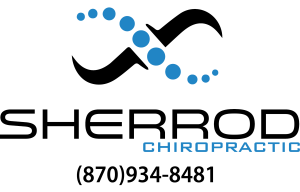Wellness Tip: Understanding Vitamin D
Vitamin D has been getting a lot of attention in studies and the media. It is being studied for its possible role in the prevention and treatment of low-back and joint pain, diabetes, hypertension, glucose intolerance, multiple sclerosis and other conditions. Some studies suggest that vitamin D may protect against cancers of the colon, prostate and breast.
What is vitamin D?
Vitamin D is a nutrient generated by the body through exposure to sun rays. It can also be found in some foods. It plays an important role in building strong bones by helping the body absorb calcium. In addition, vitamin D participates in nerve and muscle function, as well as in the function of the immune system and in the reduction of inflammation.
How can I get vitamin D?
* The body makes vitamin D when skin is directly exposed to the sun outdoors. During the warmest months, for example, 5 to 30 minutes of exposure between 10 a.m. and 3 p.m. several times a week to the face, arms, legs or back without sunscreen may be enough to produce sufficient vitamin D.
* Excessive exposure to the sun increases the risk of skin cancer. When out in the sun, wear protective clothing and apply sunscreen with a sun protection factor of 8 or more.
* People who avoid the sun, who cover their bodies with sunscreen or clothing, or who live in the northern half of the United States during the winter months should include good sources of vitamin D in their diets or take a supplement.
* Vitamin D is found in supplements in two different forms: D2 (ergocalciferol) and D3 (cholecalciferol). The D3 form may do a better job of raising levels of vitamin D in the blood and keeping levels raised for a longer time.
* Vitamin D in American diets is found mostly in fortified foods. Almost all of the U.S. milk supply is fortified with 400 international units (IU) of vitamin D per quart. Vitamin D is also added to many breakfast cereals and to some brands of orange juice, yogurt, margarine and soy beverages. Check the labels for more information.
* Fatty fish such as salmon, tuna and mackerel, as well as fish liver oils, are among the best sources. Beef liver, cheese, egg yolks and some mushrooms provide small amounts.
How much vitamin D is required?
* The current average recommended by the government for most children and adults is 200 IU. Adults 51 to 70 years of age should get 400 IU. Adult older than 71 years of age should get 600 IU.
* Certain groups of people—breast-fed infants, older adults, people with dark skin, obese people and those with Crohn’s disease and celiac disease and similar conditions—may need additional vitamin D.
* As people get older, they may develop osteoporosis—a condition where bones become fragile and may fracture easily as a result of falls. Women are at an especially high risk. Supplements of both vitamins D3 (at 700 to 800 IU/day) and calcium (500 to 1,200 mg/day) have been shown to reduce the risk of bone loss and fractures in people aged 62 to 85 years.
What precautions do I need to take?
* The safe upper limit for vitamin D is 1,000 IU/day for infants and 2,000 IU for children and adults.
* Excessive amounts of vitamin D can lead to toxicity—nausea, vomiting, poor appetite, constipation, weakness and weight loss. Excess vitamin D can also damage the kidneys.
* Vitamin D toxicity almost always occurs from overuse of supplements. Excessive sun exposure doesn’t cause vitamin D poisoning because the body limits the amount of this vitamin it produces.
* Like most dietary supplements, vitamin D may interact or interfere with other medicines or supplements, such as prednisone and other corticosteroid medicines; the weight-loss drug orlistat and the cholesterol-lowering drug cholestyramine; and with phenobarbital and phenytoin, medications that prevent and control epileptic seizures.
* Be sure to tell your health care provider about any dietary supplements and medicines you take to avoid potential interactions.
Source:
http://ods.od.nih.gov/factsheets/VitaminD-Consumer.asp



